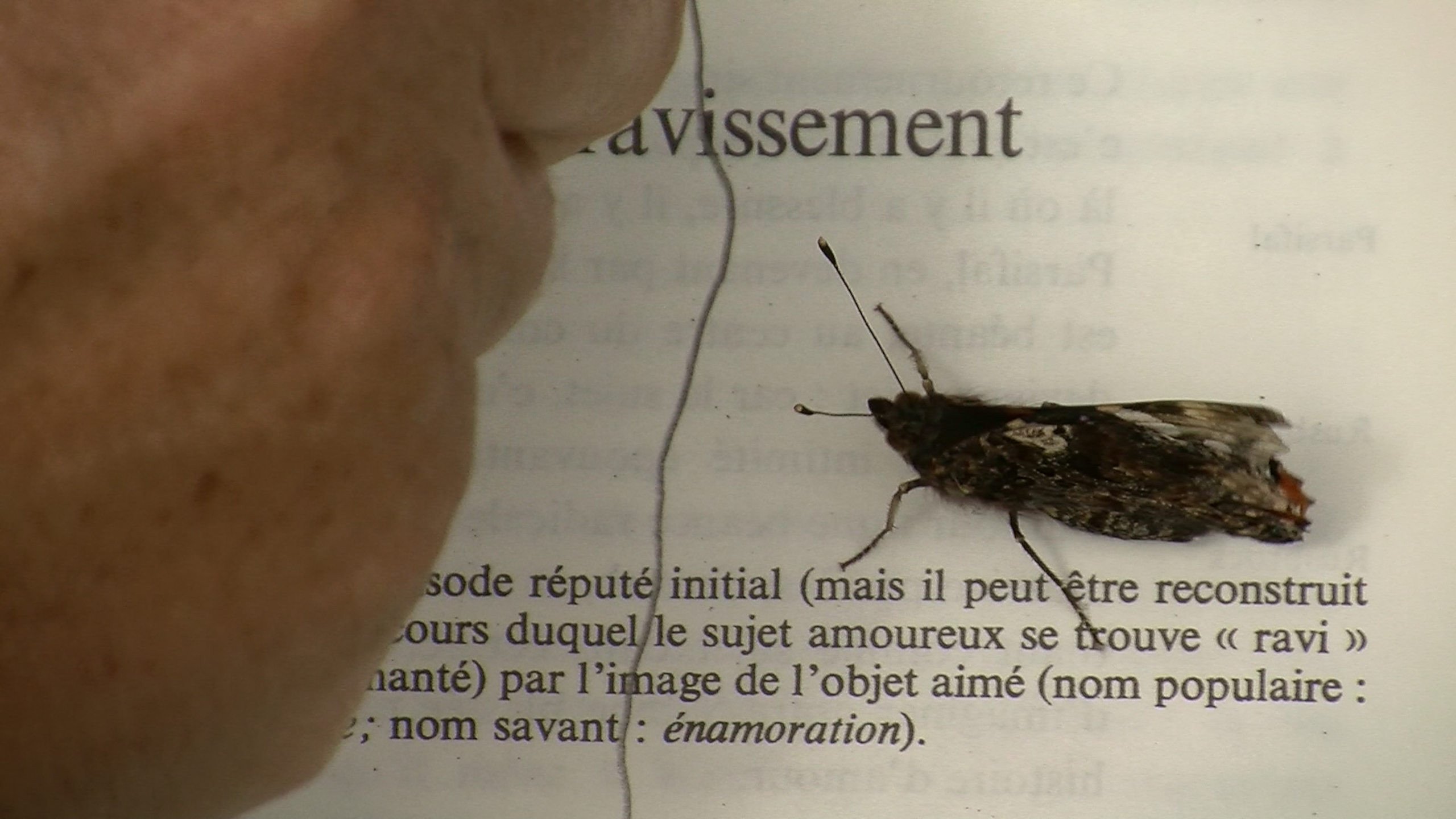The splendid landscape of the Pays de Caux that opens the film—its shades of green darkened by the light—echoes with the barking of dogs. A hunting day? A woman, white-haired and dressed in black, emerges from the woods through the branches. It’s Sophie Roger, or rather the alter ego she becomes when she steps into the frame. Since The Gardeners of Petit Paris (FID 2010), her dense, concise, and wayward films have carved out a path between cinema and the visual arts. Of these works, Love on the Bramble Path is both the most despairing and the most humorous, joyful. Despairing, because it highlights the features and emotions of solitude in a world emptied of people, deserted. Filming flowers in her garden, the solitary woman speaks to herself, as if needing to be coaxed to carry on: “Celery in bloom”… “There,” when the camera finds its focus. Funny, joyful, because one is never truly alone when holding a camera: one can play with one’s other self, with the beings and things that enter the frame along with it. In the château park, when the white-haired Irma Vep calls out “Béatrice?”, no one answers, but the gaze of a deer draws her into a comic pantomime around a tree. Further along the path, a scarecrow becomes the model and support for a graceful self-crucifixion. Back home, in the warmth, the filmmaker becomes a visual artist. With sheets of paper, dried flowers, others superimposed, pages torn from a dictionary of love’s states, she composes layers and transparencies. A song describes a world without sun: “Kiss me! Later will be too late!” Kiss whom? The gulls circling in the sky? Suddenly, a chocolate labrador leaps into the frame in slow motion. What follows is a stunning remake of the ending of Ordet (Dreyer’s film). The falling snow won’t serve as a shroud for the naked, cadaverously rigid body lying in the garden. Brought back to life by Lola the dog, the white-haired woman rises and walks. Who would have believed it? At the end of the bramble path, it’s paradise. Paws and hands layered on the page, the two friends read Virginia Woolf’s account of the death of the moth. No doubt they are thinking of the butterfly killed by a spider in the abandoned shed. At night, through the window, one might glimpse a woman and a dog dancing together in the house. In a state of rapture—like us, at the end of Sophie Roger’s film.
Cyril Neyrat
